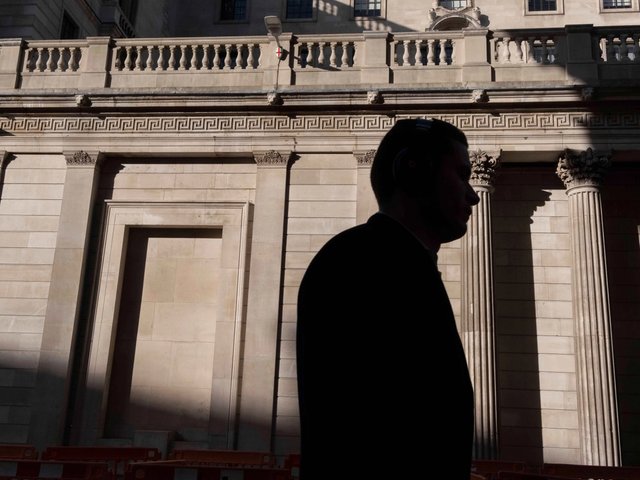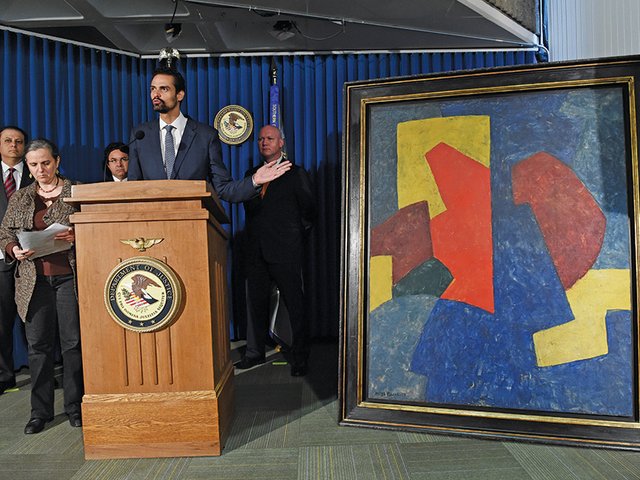The Financial Action Task Force (FATF) has released a report outlining the attraction of the art and antiquities market for organised criminals, weeks before a major criminal network was exposed in Canada and information emerged about the attempted armed robbery of jewellery at last year’s Tefaf Maastricht art fair.
The inter-governmental agency spans numerous jurisdictions and advises on global policies, with a focus on anti-money laundering (AML) regulation and counter terrorism. Its latest report, released in February, aims to outline key vulnerabilities, while providing a list of known “risk factors”.
Subject matter ranges from fraud, money laundering, illicit trafficking to the funding of terrorism. “The trade of works of art and antiquities, especially those in high values, can attract criminals who seek to exploit the sector’s history of privacy and the use of third-party intermediaries to launder the proceeds from their crimes, including drug trafficking, corruption and other crimes,” says a spokesperson for FATF.
The report reiterates longstanding claims and concerns over the market providing a platform for organised crime, which is likely to provoke a reaction from the sector, notably around the use of the United Nations Office on Drugs and Crime 2011 claim that illicit proceeds from transnational crime involving art and cultural property could be “as high as $6.3bn”.
This claim is challenged by Ivan Macquisten in a letter published in the April 2023 issue of The Art Newspaper. He writes that the figure is not “a value for illicit antiquities”, but rather one that “encompassed all art and cultural property”. Even then, he continues, “this was an estimate based on several sources”.
Nevertheless, the 60-page consolidation of longstanding research highlights growing areas of vulnerability, including the proliferation of trade online, digital assets and expanding methods of financing art, with the findings geared towards supporting governments in regulating the field. Art fairs are also noted as being vulnerable because they are “not obliged” to adhere to requirements such as “the confirmation of the provenance of cultural objects for sale”, or the identity of buyers and the source of their funds.
“As the world’s leading authority and standard setter for anti-money laundering and counter terrorism funding, reports from FATF are important and helpful—even if they don’t necessarily say anything that hasn’t been said or thought before,” says Rakhi Talwar, an art compliance consultant. “A report like this sets out expectations for how risks in the art market should be tackled on a global basis.”
Some art market experts have expressed concern about the anecdotal nature of parts of the report. “Diligence and transparency are an important goal, and the art market often falls short,” says Nicholas O’Donnell, a partner at law firm Sullivan & Worcester. “But, this report could as well have been an Indiana Jones script—long on narrative drama, short on evidence.”
He adds that the inclusion of shell companies in its list of risk factors to be conscious of could prove misleading: “Using capital structures to plan ownership and shield equity holders from liability is how most commerce works. There is nothing illicit about it, nor [is it] particular to the art market.”
Fresh pressure
If the report itself provides little new insight, its timing should ensure it attracts attention. Just weeks after its publication, Canadian police announced they had seized more than 1,000 works and arrested eight suspects involved in forgeries of works purporting to be by the Ojibwe artist, Norval Morrisseau. That the network involved a member of the late artist’s family as well as links to forced child labour served to bolster wider concerns over the extent and breadth of crime in the art market.
The Telegraph also recently reported that the Dutch police are edging closer to identifying the suspects linked to the armed robbery at Tefaf Maastricht last year, with sources claiming they are linked to the notorious Pink Panthers Balkans criminal organisation. April also marks one year since art market players have had to navigate sanctions placed on Russia by the West.
The UK Treasury has recently updated its guidance on AML obligations, which has helped to turn legislation into real business processes, a momentum that is also being supported by key trade bodies the British Antiques Dealers’ Association, the Society of London Art Dealers and the Association of Art & Antiques Dealers. They recently joined forces to commission a set of training videos.
Whether pressure on governments and enforcement agencies will translate into action remains to be seen. The report notes that “case studies and operational discussions identified that the lack of prioritisation among law enforcements on [money laundering and terrorist financing] investigation related to cultural objects is the primary investigatory challenge.”
Rena Neville of AML compliance specialists Corinth Consulting, says: “The report is clearly wide-ranging, and it will likely help governments looking to regulate the market, but it might be more productive if this type of report dealt separately with intentional bad actors participating in the trade versus the vast majority who are parties being used by bad actors.”





